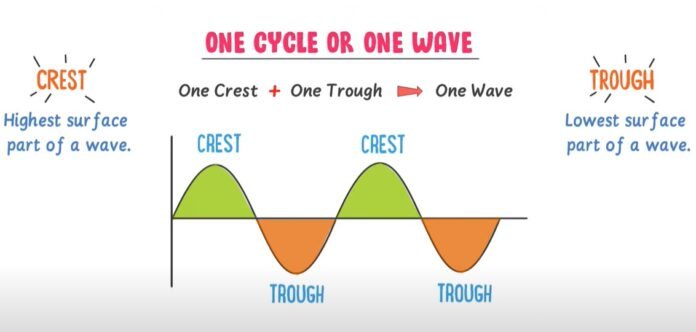Introduction
Wave number, a fundamental concept in the field of physics, is an important measure of the number of waves present in a given area. It is closely related to the number of cycles, or periods, of a wave that occurs in a given area. Wave number is expressed as the number of waves per unit distance. It is an important tool for understanding the relationship between waves and their sources, as well as their behaviour in various mediums.
Understanding wave number is essential for a wide range of applications in physics, such as quantum mechanics, sound theory, and optics. It is also used in many day-to-day applications, such as radio broadcasting and seismic surveying. By understanding the principles of wave numbers, scientists and engineers can better analyze and control the propagation of waves in various mediums.
What is a wave number?
Wave number is a mathematical concept used in physics, engineering, and other related fields. It is a ratio of the wave’s wavelength to the medium’s width. It is a measure of the number of cycles of a wave within a given distance, usually expressed in cycles per meter (CPM). Wave numbers are also known as angular wave numbers, as they are a measure of the angular frequency of wave propagation.
Wave numbers are used to describe and quantify the properties of waves, such as their speed, frequency, and polarization. In addition, wave numbers can be used to calculate the wavelength of a wave, the distance between two points, and the total energy of a wave. Wave numbers are also used to calculate the phase, amplitude, and intensity of a wave. Wave numbers can also be used to understand the behaviour of sound waves and light waves in different media.
Relationship between wave number and wave frequency
The relationship between wave number and wave frequency is an important one to understand in the field of physics. Wave number can be defined as the number of full waves in a unit of length and is represented by the symbol k. Wave frequency is the number of full oscillations of a wave that occur in a unit of time and is measured in hertz (Hz). Wave number and wave frequency are directly proportional to each other, meaning that when one increases, the other increases as well.
Wave number and wave frequency are related to each other through the equation
f = ck,
where c is the speed of light and k is the wave number. This equation shows that the higher the wave number, the higher the wave frequency, and vice versa. This is because as the wave number increases, the wavelength decreases, and as the wavelength decreases, the frequency increases.
The relationship between wave number and wave frequency is an important concept in many areas of physics. Understanding the relationship between wave number and wave frequency can help us understand the behaviour of these types of waves and the properties of the materials they interact with.
Relationship between wave number and wave wavelength
The relationship between wave number, usually denoted by k, and wavelength, usually denoted by λ (lambda), can be described as a reciprocal relation k = 1/λ. As the wavelength of a wave increases, the wave number decreases. The wavelength and wave number of all types of waves including electromagnetic waves and sound waves are closely related because they both describe the same physical phenomenon – a traveling oscillation through some medium.
In physics, it is noted that for all types of waves, kλ will always equal 2π; this proportionality constant reveals the direct inverse correlation between wave number and wavelength. Furthermore, the amplitude of a particular type of wave is not affected by either its wavelength or its frequency, which describes how quickly a wave oscillates each second – further proof to show that all waves are indeed interconnected.
Applications of wave number
Wave number has a wide range of applications in numerous mathematical, scientific, and engineering fields.
- It is used to calculate the geometry of atoms since it can represent multiple wavelengths.
- In optics, wave number is important for understanding light and its behaviours such as diffraction and interference.
- It also plays an important role in acoustics since it helps identify the patterns of waves within acoustic media.
- Its resonance frequencies are used to build antennas and these antennas can be used in communication systems.
- One interesting application of wave number is its use within medical imaging technologies such as Magnetic Resonance Imaging (MRI).
- Finally, wave numbers also have implications for seismology as vibrational energy can be better understood with their data.
Recommended Articles:
Physics – Uses of Concave Lens
Why are living organisms classified?
What is Abiotic Factors? Definition Examples, Types, Responses
A wavenumber of zero indicates a wavefront striking a line of detectors simultaneously. The greater the mass, the lower the wave number; the stronger the bond, the higher the wavenumber. Wave numbers can be used to specify quantities other than spatial frequency. The wave number and frequency are directly proportional to each other, greater frequency will result in a high wavenumber or more waves. The red colour has the highest wavelength and the shortest frequency.Physics - Wave Number FAQs
Can a wave number be zero?
What affects wave number?
What is the purpose of wave number?
Does the wave number depend on frequency?
Which Colour has the highest wave number?
